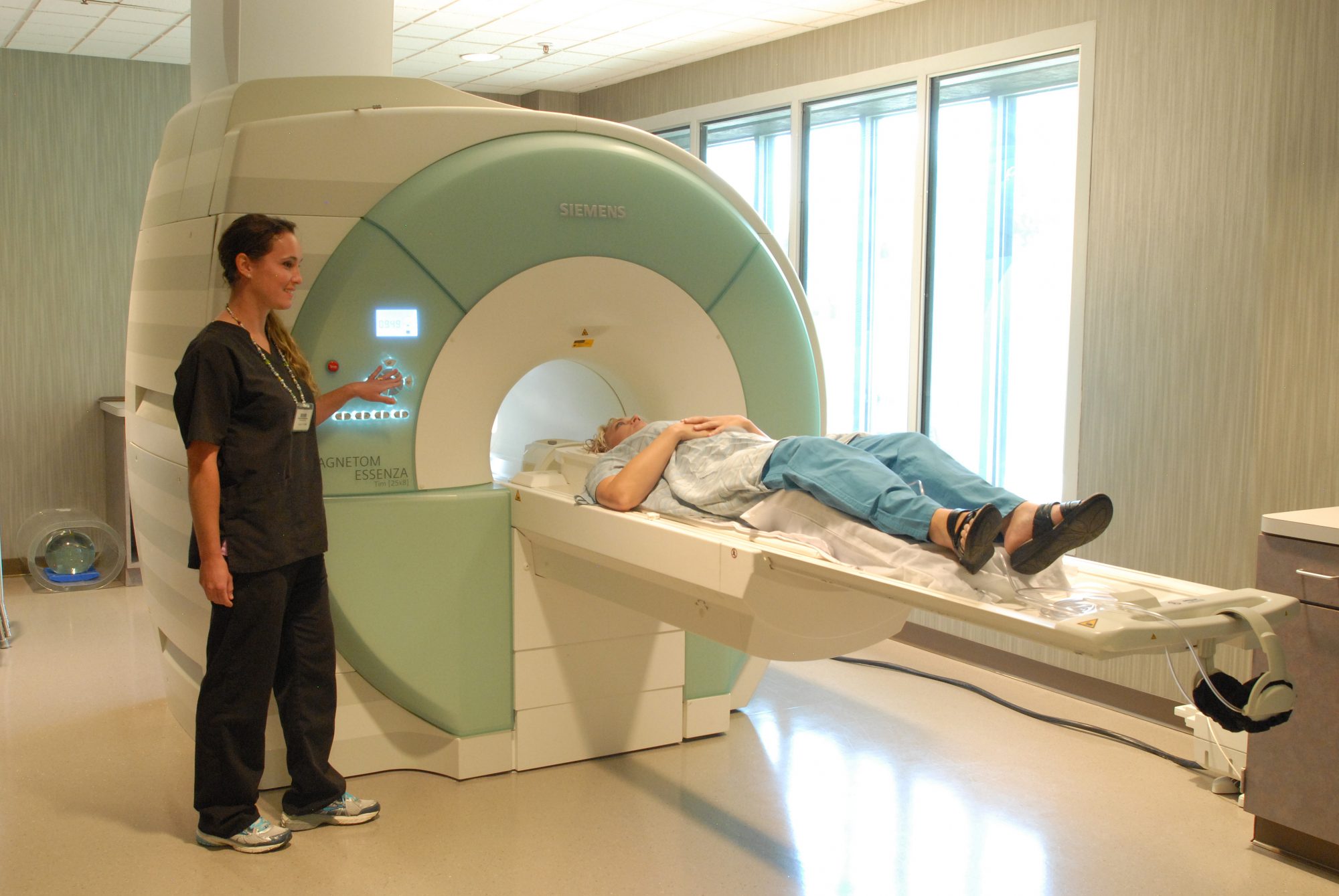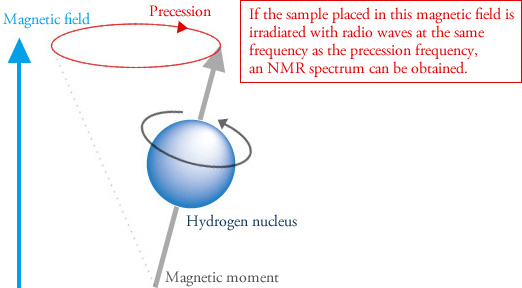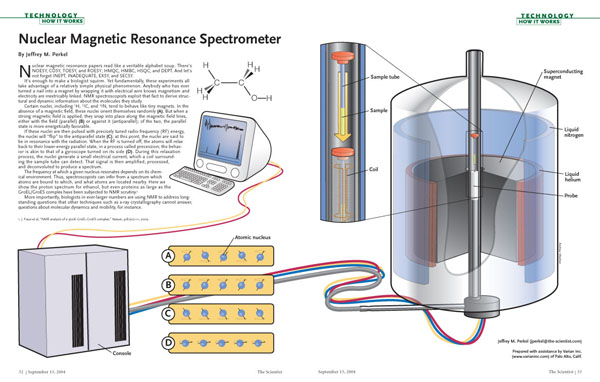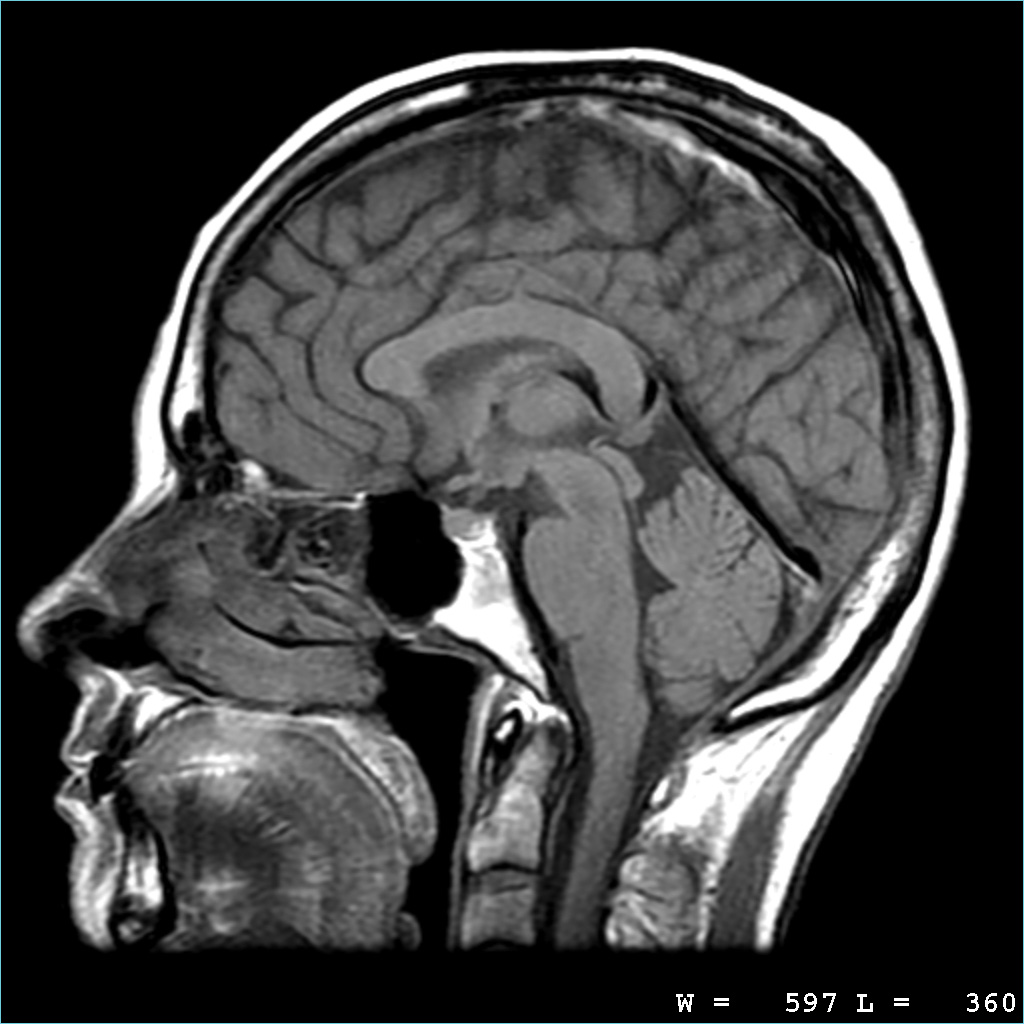MRIs (Magnetic Resonance Images) are becoming an increasingly common tool used by doctors to aid them in diagnosing the medical condition of their patients. I’ve just had my third MRI taken this morning so I thought this would be a good opportunity to talk about how MRIs work and why they are such useful tools for doctors.

For those who have never received an MRI I’ll start with a short description of the experience. First and foremost, no metal of any kind can be placed within or even near an MRI machine. MRI machines produce intense magnetic fields, so intense that magnetic materials like iron can be hurled across the room while even non-magnetic metals like copper or aluminum can be inductively heated to dangerous temperatures. Patients being examined must remove all wristwatches, rings etc. while people with metal implants in their bodies, say a steel rod to strengthen a broken bone, simply cannot have an MRI because it would be extremely dangerous for them.

There are two basic designs of MRI machines, open and closed. Closed are the original and still more common type, if only because they cost less. A closed MRI machine consists of a doughnut shaped solenoid, barely large enough to fit a slab that a person can lay on through the doughnut hole. The portion of the patient’s body being examined is kept motionless in the center of the doughnut solenoid, which produces the intense magnetic fields required for the resonance imaging.
Because the opening of the doughnut in a closed MRI machine is so small many people get a strong feeling of claustrophobia while being examined. So open MRI machines were developed with larger, more open volumes of intense magnetic field. Of course, since generating a intense magnetic is costly; generating a larger volume of intense magnetic field is even more expensive. Therefore open MRIs are less common than the smaller, less costly closed version.

MRIs are also very noisy. If you’ve ever walked past an electric power sub-station you will have heard the 60 hertz hum of the transformers, a sound I know all too well. That sound is caused by the alternating current flowing around the magnetic core of the transformers literally causing them to vibrate. Well the magnetic fields generated during an MRI exam are even stronger, turn on and off frequently and consist of many different frequencies. All that causes the MRI machine to bleep and chirp and buzz at very loud volumes, and remember the patient is stuck right in the middle of the noise. Most states, perhaps all of them by now, require MRI patients to wear ear protection in order to prevent any damage to their hearing from the noise.
So much for the experience of having an MRI. How do MRIs work and what makes them different from say, having an X-ray taken?
Nuclear Magnetic Resonance (NMR) is a purely quantum mechanical phenomena dealing with those atoms whose nuclei possess an odd number of either protons or neutrons. Such nuclei have a sum magnetic moment of one Bohr magnetron to them and when placed into a strong external magnetic field they will align that magnetic moment with the external field. (Actually each proton and neutron have their own magnetic moment but in a stable nucleus the protons and neutrons arrange themselves so the entire nucleus has a total magnetic moment of no more than one.)
Now if a second, oscillating magnetic field is applied perpendicular to the stable field at just the right, resonant frequency the nucleus will begin to precess like a top that is losing its spin. That resonate frequency is determined by the properties of the nuclei and the strength of the stable magnetic field. That precession then causes the nucleus to radiate electro-magnetic waves in the 60-1000 million Hertz range (MHz), almost the same frequencies as broadcast television. Frequencies that radio engineers know very well how to detect and measure.

By observing those EM waves physicists have been able to learn a great deal about the internal structure of many different nuclei with devices known as Nuclear Magnetic Resonance Spectrographs. As far as medical diagnostics is concerned however only the simple nucleus of a hydrogen atom, just a single proton, is used. You see with all of the water in our bodies, and every molecule of water having two hydrogen atoms medical MRI machines can scan our entire bodies using only hydrogen. This concentration on a single type of nucleus helps make a very expensive machine a little bit less costly.

This is how an MRI machine can see inside our bodies, measuring the variations in the moisture level of our different organs by the intensity of EM radiation given off by the hydrogen nuclei in that organ. That is what makes MRIs more sensitive to things like tumors, lesions, tears and other abnormalities than X-rays. That is why more and more doctors are prescribing MRI examinations in order to help diagnose their patients medical problems, despite their high cost.


Over the last century we humans have been developing ever more powerful and sensitive drugs, treatments and instruments for dealing with our diseases and other aliments. MRI is one of the more remarkable of those developments, allowing doctors to see inside the human body with a clarity never before possible.
